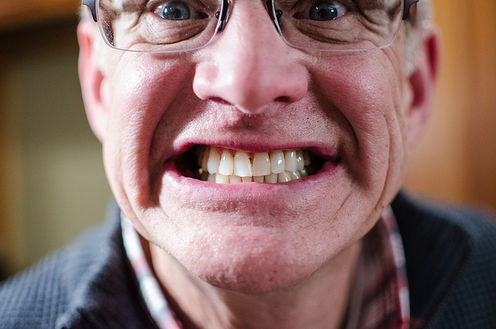
An Aussie smile is an instant indicator of socioeconomic status, employability and self-esteem. It’s also a predictor of physical health.
So it’s shocking that Australians’ dental health has not improved in recent years. The average number of children’s baby teeth affected by decay has risen. Around 45% of children aged 12 have decay in their adult teeth. Over one-third of adults have untreated decay. And more than 20% of people aged 65 and over have lost all their teeth.
The picture is worse for Indigenous Australians, especially in remote communities, where sugar-laden processed foods are now ubiquitous but dental services are scarce.
Poor oral health and dental decay are the cause of pain, poor nutrition and embarrassment. When appearance and speech are impaired by dental disease, this may inhibit opportunities for education, employment and social interactions.
Poor oral health is also linked to heart infections, coronary heart disease, stroke, poor outcomes in pregnancy and aspiration pneumonia.
In an article published this week in the Medical Journal of Australia, I make the case that if we care about health and well-being, tackling preventable disease, reducing hospital admissions, addressing workforce absenteeism and productivity, and closing the gaps in health disparities, then we must bridge the dental-medical divide.

I’m pragmatic in my approach. I’m not arguing for including dental services in Medicare. But I am arguing that it’s increasingly hard to rationalise the current approach, which excises the mouth from the rest of the body.
Medicine and dentistry remain distinct practices that have always been treated differently by the health care system, health insurance funds, public health professionals, policymakers and the public leads.
This has led to another dental divide, based on income and geography. Dental care is expensive. Much of the cost is borne by the patient, even when they have private health insurance, and 80% of dentists work in metropolitan areas.
Those Australians who can afford regular and routine dental care report low levels of extractions and relatively low levels of fillings. But for too many Australians, a visit to the dentist is an unaffordable luxury. In such circumstances, many people are forced to seek pain relief from general practitioners and emergency departments, adding to the pressure on these services.
The consequences are also costly: in 2010-11 (the most recent data) there were 60,590 potentially preventable hospital admissions for dental conditions and 129,084 cases of general anaesthesia for dental procedures, mostly for children having teeth pulled.
The previous Labor government made real efforts to address preventive services for children and tackle the long waiting lists for public dental services for adults. But the 2014-15 budget cut A$650 million from dental programs on top of savings of A$42.4 million made last December.
The savings go to the Medical Research Future Fund (how much of that will be allocated to dental research?) and the burden falls disproportionately on the poor who are reliant on public health services.

I propose the following initiatives as first steps towards the better integration of dental and medical care to improve health outcomes and contain overall health care spending:
-
Government investment should focus on the best-value investments, which span three broad areas: fluoridation, preventive services for children, and preventive and treatment services for the poor and those with special needs.
-
Dental and medical professionals must become partners in delivering health care services. This should entail some shared training, recognition that dental services are an integral part of primary care, inclusion of dental information on Personally Controlled Electronic Health Records and professional courtesies around patient referrals.
-
A “Dental Health Service Corps” made up of dentists and dental staff, doctors, nurses, community/Aboriginal health workers and public health professionals could ameliorate the maldistribution of the dental workforce and take oral health services and education where they are needed.
-
Health promotion activities around tackling obesity, smoking and substance abuse, breast feeding and better management of chronic conditions and the use of multiple medications need to include oral health information. Help with oral hygiene is also a critical aspect of care for the frail aged, people with mental illness, people with disabilities and those on certain medication regimes.
-
Governments should consider establishing emergency dental services within hospital emergency departments, at least on weekends.
-
If private health insurance funds are serious about greater involvement in primary care to keep patients out of acute care, they must consider providing better access to dental care with reduced out-of-pocket costs.
Implementing these proposals will require concerted action from all stakeholders. But it’s more about changes in cultures and focus than increased resources – although these are also needed. Bad teeth and poor oral hygiene are not simply cosmetic problems but the cause of sickness, disability and even death.
Lesley Russell does not work for, consult to, own shares in or receive funding from any company or organisation that would benefit from this article, and has no relevant affiliations.
